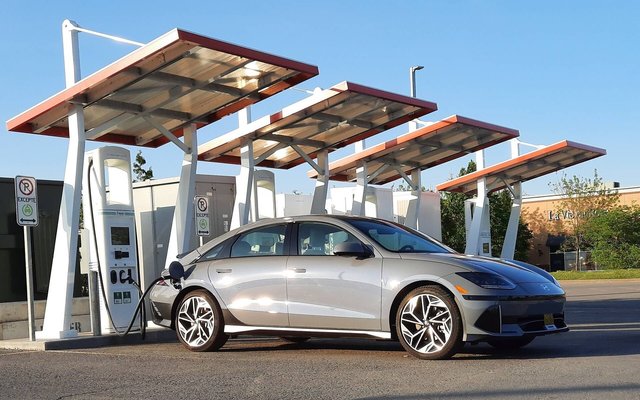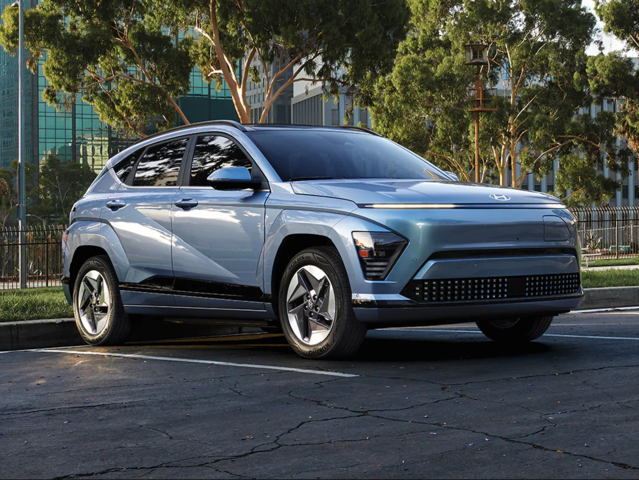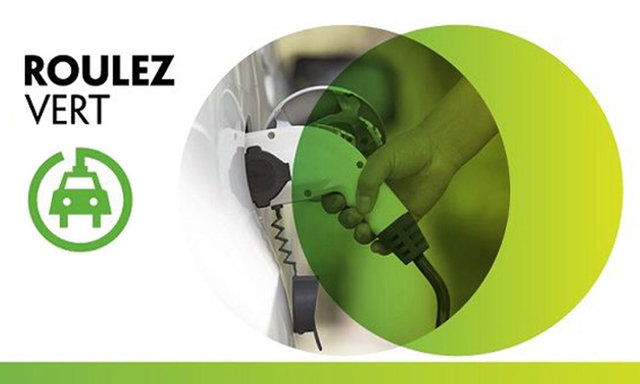Slowly but surely, the first units of the all-new Hyundai IONIQ 6 are hitting the road in Canada, a few weeks after it won the prestigious World Car of the Year award (not to mention the World Design of the Year award and World Electric Vehicle of the Year award).
And if you remember, we at The Car Guide named the IONIQ 6 the Best New Car of the Year as a serious threat to the Tesla Model 3 and Polestar 2. You can add the BMW i4 to the list, the latter taking home AJAC’s Canadian Car of the Year award for 2023.
Head-Turning Looks
Designed as a so-called “electric streamliner,” the IONIQ 6 turns heads and leaves no one indifferent. It’s arguably much more inspiring to look at than its popular American rival and just as distinctive as the Swedish star. Will it age gracefully? Now that’s another story.
A sharp contrast with the angular IONIQ 5 crossover from Hyundai, except for various pixel-themed details, the sedan’s uniquely round silhouette was created with aerodynamic efficiency in mind. Its 0.21 drag coefficient is only bested by a trio of larger, longer and pricier EVs including the Lucid Air. From the active shutters up front to the double spoiler in the rear (the big, black one at the base of the rear window is reminiscent of classic Porsche 911s from the 1980s), the IONIQ 6 spares no effort to maximize range—more on than later.
By the way, the Transmission Blue (more like dull grey) seen on our tester wouldn’t be our first choice. Not sure about that matte Digital Green, either. Ultimate Red or Abyss Black, on the other hand, is perfect—the latter makes a more direct connection with the gorgeous Prophecy concept the IONIQ 6 is derived from.
Accommodating Interior
Inside, the cabin proves extremely accommodating with the best visibility (especially in the rear), the largest space (even larger than some midsize cars) and the most generous storage (under the console, in the doors, etc.) among the four electric sedans in the segment. The front seats provide great comfort and support for all sorts of body types, and legroom is excellent in each of the two rows, which is something few competitors can brag about.
That being said, adults sitting in the rear will find headroom to be quite tight. As for cargo, the trunk offers a disappointing 316 litres of room and the small opening doesn’t help. No rear hatch, here, just a trunk lid. And don’t look for a large frunk like the Model 3’s, because the one in the IONIQ 6 is merely symbolic.
The centre console is one of the main differences between the sedan and the IONIQ 5. Sure, it takes away some legroom, but we prefer the extra options it provides. Save for a few elements, the dashboard design and control layout are similar, including the pair of 12.3-inch displays mounted side by side and the infotainment system that proves relatively user-friendly despite the numerous icons and menus. It would be nice if the touchscreen were oriented toward the driver, because some of the controls are a bit out of reach. We like the physical shortcut buttons below, while the touch-sensitive HVAC controls further down are a little less intuitive to use while driving.
The steering wheel might be devoid of a Hyundai logo, but it combines all the essential functions in addition to a unique shifter, a handy drive mode button and regenerative braking paddles (one-pedal driving is possible in the most aggressive setting). Fit and finish doesn’t match the Europeans, though.
Exceptional Range
On the road, the Hyundai IONIQ 6 delivers slower acceleration than the competition, but there’s still plenty of fun to be had in the dual-motor variant (320 hp, 446 lb-ft., 0-100 km/h in 5.1 seconds in Sport mode). Handling is good but lacks a bit of response and feedback, certainly when compared to a BMW i4. Hyundai didn’t skimp on advanced safety and driver assist features, although some of them (such as lane keeping assist) can prove annoying at times. You can’t adjust their level of intervention, only turn them off or on.
Where the Korean newcomer really shines is range. With the 77.4kWh battery, the single-motor RWD variant can travel up to 581 km, while dual-motor units manage 509 km. Alas, that number will drop to 435 km if you select the Ultimate Package with 20-inch wheels, which also affect ride quality. These are the official ratings, to be clear. Our Preferred Ultimate tester had 421 km of range to offer after being charged to 90 percent.
We used one of the rare 350kW DC fast chargers available in the country and it took us just 17 minutes to go from 16-80 percent (Hyundai promises 20-80 percent in 18 minutes). With a 50kW DC charger, the same operation will take 73 minutes. Level 2 (240V) AC charging at home means a full charge in just under 7 hours. By the way, the car we drove maintained an average of 17.4 kWh/100 km without using A/C or Eco mode too much. The RWD model is unbeatable with 14.9 kWh/100 km.
Which IONIQ 6 Should You Buy?
The new 2023 Hyundai IONIQ 6 is a world-class EV thanks to its tremendous efficiency, range and value. Too bad delivery times are much longer than those of the Model 3 and Polestar 2.
The base IONIQ 6 Preferred RWD carries a starting MSRP of $54,999 plus $1,925 freight and delivery. The dual-motor Preferred AWD starts at $57,999 and represents the best combination in our opinion (if you can settle for fabric seats). Add another $6,000 for the Ultimate Package, which includes a bunch of gadgets and technologies that may or may not be useful to you.
All three IONIQ 6 models are eligible to the $5,000 EV rebate from the federal government, plus provincial incentives of up to $7,000 where applicable.
Standard content across the lineup includes full LED lighting, a battery pre-heater and charge prep, power trunk, heated steering wheel and front seats, wireless smartphone charging, as well as over-the-air software updates and Bluelink connected services for three years.






